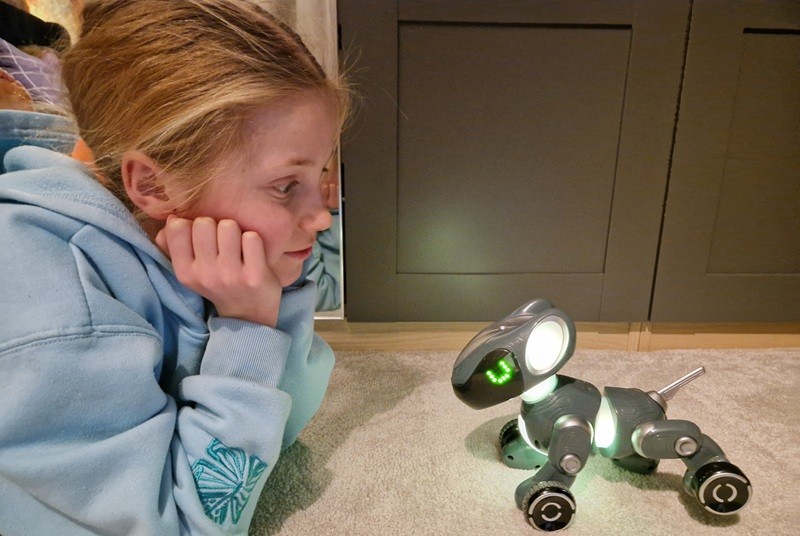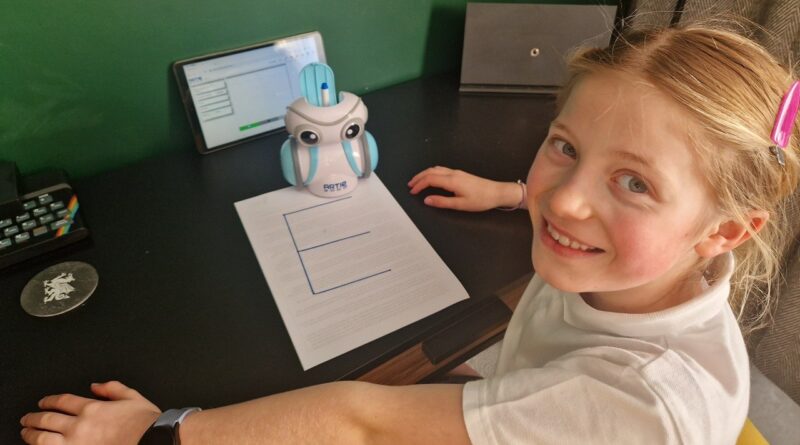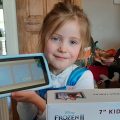Cool coding for curious kids
Learning coding is essential for developing problem-solving skills, logical thinking, and creativity in children. It introduces young minds to computational thinking, helping them break down complex problems into manageable steps. Early exposure to coding also enhances maths and analytical abilities, making learning more interactive and engaging.
Of course, it can also be fun, especially when educational toys are used to turn abstract concepts into real-life trial-and-error activities that foster resilience and perseverance.
We invested in a couple of different coding robots from the award-winning range by Learning Resources. The first of these was an Artie robot, that can be programmed to draw pictures and write with a pen, while the second was a PYXEL dog.
Learning Resources pitch all their coding products as fun and educational toys designed to introduce children to coding and robotics.
PYXEL certainly looks charming enough and my daughter Ella was delighted when she first unboxed it. As soon as we turned him on his pixelated LED eyes and mouth started to display a range of expressions and he began to pant, woof and wag his tail. PYXEL is also equipped with sensors that enable him to react to touch and sounds. We discovered the first of these when Ella went to stroke PYXEL and he moved backward.
PYXEL comes with a simple remote control that has six buttons, each containing a pre-programmed command for it. We went through these one by one, watching PYXEL wagging his tail, dancing etc.
All this was very entertaining but PYXEL is designed to be programmed not just played with, so we connected him to our laptop via the inbuilt Wi-Fi connection and typed in the link that directs users to his user interface.

PYXEL can be coded through block-based coding and Python. We played around with the block-based version first and were immediately able to send simple commands directly to PYXEL, such as making him move backward by a defined distance, chase his tail, dance or pee. We could also make his eyes and mouth express different moods or change colour or bark a certain number of times. After that, we used the drag-and-drop code to execute all these in different orders, which my daughter very quickly grasped. Then we followed some of the step-by-step tutorials and moved on to more complex logic code that made use of PYXEL’s inbuilt sensors. This took a while longer for the 10-year-old to understand, but soon we were able to enter codes that instructed PYXEL bark if she were to put her hand near PYXELS’s face, or dance if she clapped her hands three times in a row.
There are several other commands, and these can all be toyed around with and looped, to carry out actions, expressions or sequences a certain number of times.
After becoming comfortable with Blockly’s drag-and-drop language, we sent six of our favourite code sequences to the remote control, to store her favourite codes and ran them at the touch of a button.
Setting Artie up was very similar to PYXEL, using an inbuilt Wi-Fi to connect to our laptop. We had the added step of inserting one of the five coloured marker pens into Artie, which was straightforward enough.
The interface with Artie is different from the Blockly interface that you’re first met with on PYXEL, but is straightforward enough to understand. There’s a direction command that allows you to select backwards or forwards, and define how far Artie will travel. There’s also a rotate command, that gives the option of left or right and by how many degrees. Finally, there is the pen up and pen down command to decide whether Artie will leave a line as he moves.
It’s a remarkably simple interface but drawing letters, like a capital E can take a lot of trial and error to get right. We had to plot direction, distance, angles whether the pen needed to be up or down for each movement. It was a much steeper learning curve than I expected, but Ella found it so rewarding when we finally got the letter E on paper. The next two letters of her name were simple in comparison, but writing a capital A required more learning from her mistakes. We eventually realised that there was a simulation screen that we could test our code on before using Artie on paper.
To me, using Artie with this coding method was more complex and rewarding than Blockly on PYXEL and I’m sure Ella felt the same way. There are also lots of pre-programmed shapes that can easily be sent to Artie to draw for younger children though. It’s also possible to use Blockly, Python and other coding languages on Artie. This flexibility will make Artie a long-lasting educational tool for both our children and it’s helped Ella’s older brother understand bearings, which he’s been studying in high school.
I’m looking forward to moving onto the Python coding language on PYXEL and Artie, so that Ella and her brother can build on their coding knowledge in a fun and engaging way.






